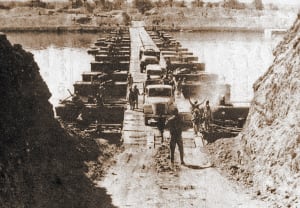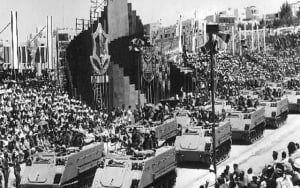Former Israeli Navy chief sheds new light on naval component of 1973 Yom Kippur War
New info highlights the Battle of Latakia, where Syrian and Israeli naval vessels clashed

A newly-released account by former Israel Navy commander, Vice-Admiral Benjamin Telem, sheds light on the naval component of the Yom Kippur War that Israel fought half a century ago.
Telem's account reveals details of the coordinated Egyptian-Syrian attack on the Jewish state during the Day of Atonement, the holiest day in the religious Jewish calendar.
“We’ve gone into battle to defend the peace of Israel, its rights and its freedoms,” stated Telem in a telegram to senior navy officials at the beginning of the Yom Kippur War in 1973.
The Yom Kippur War was mainly fought on the ground and in the air and ultimately claimed the lives of approximately 2,700 Israeli soldiers and at least 10,000 Arab soldiers from Egypt and Syria.
The comparatively small Israeli Navy has traditionally existed in the shadows of the larger, higher-prioritized Israeli Air Force (IAF) and the Israeli ground forces. However, the Jewish state’s navy has, nonetheless, played a significant role in securing Israeli naval rights in international waters.

The former Israeli naval commander’s account reveals details of the coordinated Egyptian-Syrian attack on the Jewish state during the Day of Atonement, the holiest day in the religious Jewish calendar.
“The forces of Egypt and Syria opened an aggressive and merciless war in the air, in the sea, and on the land, and raided IDF strongholds and bases along the borders of Syria and Egypt, Telem wrote.
“The navy, which over the years has undergone a complete change in its armaments and equipment, has quickly and efficiently prepared for every mission that will be assigned to it in the maritime theater,” he added.
The Yom Kippur War is mainly remembered for its dramatic tank battles in the Sinai Desert and the Golan Heights, which have been studied in detail by military academies worldwide.
However, the newly-released document reveals more information about the Battle of Latakia where Syrian and Israeli naval vessels clashes off the Syrian coast.
“In the battle between navy missile boats and the Syrian vessels that took place in the sea opposite the Latakia Port, they eliminated three missile boats of the ‘Komar’ and ‘Osa’ class, eliminated one [Project] 123-K class torpedo boat, and eliminated a T43 minelayer,” according to the document.
It further describes the battle weapons that were used, including Syria's Russian-made “Styx” missiles and Israel's Gabriel sea-to-sea missiles.
“The Syrian missile boats fired on the navy missile boats about eight ‘Styx’ missiles but all missed our forces. Two ‘Styx’ missiles were shot down by the missile boats’ anti-missile fire from 40- and 20-mm cannons. The navy missile boats that engaged the Syrian vessels attacked with ‘Gabriel’ sea-to-sea missiles and their cannons. They fired eight ‘Gabriel’ missiles during battle and confirmed that six of them hit the enemy.”
The discovery of vast natural gas fields off the Israeli Mediterranean Coast has led to a significant upgrade of the Israeli Navy and its offensive capabilities in recent years.
Israel currently has one of the most modern submarine forces in the Mediterranean basin and is in the process of upgrading its surface vessel capabilities.
In May, the Israeli Navy declared three new Sa’ar 6 Corvette-class vessels “ready for combat” against the Iranian ayatollah regime and its regional terror proxies, such as Hezbollah. A major task for the Israeli Navy is to protect the Jewish state’s valuable offshore natural gas assets.
"The mission of defending Israel's Exclusive Economic Zone and strategic assets at sea is the primary mission of the Israeli Navy," stated the former Israeli Navy Commander Maj.-Gen. Eli Sharvit.

The All Israel News Staff is a team of journalists in Israel.
You might also like to read this:
















